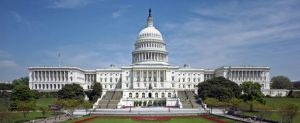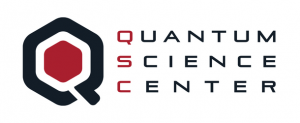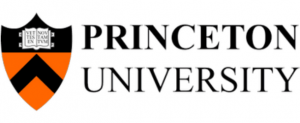Quantum News Briefs August 10: CHIPS Act Targets Emerging Technologies Including Quantum, AI; WISeKey Implementing Post–Quantum Algorithms in its Secure Semiconductors MS6001/MS6003; WISeKey Implementing Post–Quantum Algorithms in its Secure Semiconductors MS6001/MS6003 & MORE

Quantum News Briefs opens today with two semiconductor related articles: a summary of “CHIPS Act Targets Emerging Technologies Including Quantum, AI” followed by “WISeKey Implementing Post–Quantum Algorithms in its Secure Semiconductors MS6001/MS6003” announcement. This is followed by the announcement that Travis Humble has been named director of the Quantum Science Center at ORNL and MORE.
CHIPS Act Targets Emerging Technologies Including Quantum, AI
 Semiconductors have grabbed most of the attention with the CHIPS and Science Act, but emerging tech such as quantum and AI figures will receive a generous share of the $280 billion.
Semiconductors have grabbed most of the attention with the CHIPS and Science Act, but emerging tech such as quantum and AI figures will receive a generous share of the $280 billion.
Much of the focus on the CHIPS and Science Act of 2022 has centered around strengthening the semiconductor industry, but the lion’s share of the funds being allotted in the $280 billion bill targets industry and academic institutions conducting research and development on emerging technologies according to TechTarget’s Editor at Large, Ed Scannell. Quantum News Briefs summarizes below; click here to read lengthy source article.
The federal government will distribute around $50 billion over the next five years, mainly to chip manufacturers that will come out of the newly established CHIPS for America Fund. That leaves nearly $230 billion. Two such technologies prominently mentioned for funding are quantum computing and AI.
NSF will also expand the existing Quantum User Expansion for Science and Technology program, making it easier for researchers to access government quantum computing hardware and clouds. NSF will be granted $30,000,000 in fiscal year 2023, escalating in each of the following four years and peaking at $36,465,188 in 2027.
NSF will work with a select group of industry partners that will advise the agency on what quantum vendors and universities are best positioned to maximize the government’s investment. That process has not started yet.
*****
WISeKey Implementing Post–Quantum Algorithms in its Secure Semiconductors MS6001/MS6003

WISeKey International Holding Ltd, a global cybersecurity, AI, Blockchain and IoT company, has announced substantial progress in the implementation of post-quantum algorithms in its Secure Semiconductors MS6001/MS6003. Quantum News Briefs summarizes today’s announcement below.
During the last two years, WISeKey has made substantial progress in developing post-quantum resistant algorithms by establishing strategic R&D partnerships with MINES Saint-Etienne Research Institute (“MINES Saint-Etienne”), an internationally renowned multidisciplinary university and lab created in 1816, aiming to help the international community find cryptography algorithms that will resist future quantum computing based cyber-attacks.
The WISeKey’s team of experts is working with several NIST’s candidates for the MS600X Common Criteria products: Crystals-Kyber for key exchange mechanism, and Crystals-Dilithium for signatures. The partnership is focusing into the practical implementation aspects for both algorithms, considering physical side-channel attack and deep learning process. This work completes the implementation of NTRU and ROLLO algorithms that the team has already studied, paving the way of a complete post-quantum cryptography toolbox.
WISeKey is also working with NIST to define recommended practices for performing trusted network-layer onboarding, which will aid in the implementation and use of trusted onboarding solutions for IoT devices at scale.
*****
Travis Humble Named Director of Quantum Science Center at ORNL
 Travis Humble has been named director of the Quantum Science Center headquartered at the Department of Energy’s Oak Ridge National Laboratory. The QSC is a multi-institutional partnership that spans industry, academia and government institutions and is tasked with uncovering the full potential of quantum materials, sensors and algorithms. Quantum Briefs summarizes; complete announcement can be read here.
Travis Humble has been named director of the Quantum Science Center headquartered at the Department of Energy’s Oak Ridge National Laboratory. The QSC is a multi-institutional partnership that spans industry, academia and government institutions and is tasked with uncovering the full potential of quantum materials, sensors and algorithms. Quantum Briefs summarizes; complete announcement can be read here.
Humble was named deputy director in 2020, when DOE established this five-year, $115 million effort as one of five National Quantum Information Science Research Centers. Following the departure of former QSC Director David Dean, Humble began serving as interim director in January.
As interim director, Humble has overseen the QSC’s three primary focus areas: quantum materials discovery and development, quantum algorithms and simulation, and quantum devices and sensors for discovery science. In his new role, he will continue collaborating with QSC partner institutions including ORNL, Los Alamos National Laboratory, Fermi National Accelerator Laboratory, Purdue University, Microsoft and IBM.
A distinguished ORNL scientist, Humble also directs the laboratory’s Quantum Computing Institute and the Oak Ridge Leadership Computing Facility’s Quantum Computing User Program. The QSC leverages DOE user facilities, including the OLCF, to solve research problems.
As QSC director, Humble will prioritize the development of quantum materials for quantum computing and quantum sensing, as well as the application of these technologies to aid scientific discovery, improve the nation’s security and energy efficiency, and ensure economic competitiveness. Other goals include demonstrating the advantages of early quantum computers and advancing methods for probing the fundamental physics of quantum matter. Read ORNL announcement here.
*****
South Korea to Have the World’s Fifth IBM Quantum Computing Center
 Yonsei University in Seoul, South Korea, has signed an agreement with IBM Korea to build the “Yonsei-IBM Quantum Computing Center.” With the signing, South Korea will have the world’s fifth IBM Quantum Computing Center after the United States, Germany, Japan, and Canada, while Yonsei University and IBM will start construction of the “Yonsei-IBM Quantum Computing Center” at the Yonsei Science Park (YSP) on the International Campus in Songdo, Incheon, to operate from 2024.
Yonsei University in Seoul, South Korea, has signed an agreement with IBM Korea to build the “Yonsei-IBM Quantum Computing Center.” With the signing, South Korea will have the world’s fifth IBM Quantum Computing Center after the United States, Germany, Japan, and Canada, while Yonsei University and IBM will start construction of the “Yonsei-IBM Quantum Computing Center” at the Yonsei Science Park (YSP) on the International Campus in Songdo, Incheon, to operate from 2024.
Since Yonsei University signed an MOU with IBM in October 2021, it has held various related activities, such as holding the “Quantum Symposium” in February 2022 online and offline to expand the quantum computing ecosystem and promote collaboration with leading domestic companies, universities, and information research institutes. As the university’s understanding of quantum computing technology enhanced, the promotion of the contract was accelerated.
Under the contract, Yonsei University will promote quantum industry and research, develop software to utilize quantum computing, make efforts to win orders for quantum computer operations, and train talent for future quantum expert education based on IBM’s quantum computing technology. In particular, Yonsei is expected to become a domestic quantum hub in Korea by establishing the IBM Quantum Computing Center, contributing to creating an ecosystem of quantum computing industries that encompasses the “industry-university-institute-hospital-government” collaboration. See complete announcement from Yonsei University here.
*****
Researchers Simulate Ice Formation by Combining AI and Quantum Mechanics
 A team based at Princeton University has accurately simulated the initial steps of ice formation by applying artificial intelligence (AI) to solving equations that govern the quantum behavior of individual atoms and molecules.
A team based at Princeton University has accurately simulated the initial steps of ice formation by applying artificial intelligence (AI) to solving equations that govern the quantum behavior of individual atoms and molecules.
The resulting simulation describes how water molecules transition into solid ice with quantum accuracy. This level of accuracy, once thought unreachable due to the amount of computing power it would require, became possible when the researchers incorporated deep neural networks, a form of artificial intelligence, into their methods.
The ability to model the initial steps in freezing water, a process called ice nucleation, could improve accuracy of weather and climate modeling as well as other processing like flash-freezing food.
Pablo Debenedetti, Princeton’s dean for research and the Class of 1950 Professor of Engineering and Applied Science, and a co-author of the new study.
“Ice nucleation is one of the major unknown quantities in weather prediction models,” Debenedetti said. “This is a quite significant step forward because we see very good agreement with experiments. We’ve been able to simulate very large systems, which was previously unthinkable for quantum calculations.” Read complete news announcement here.
*****
Sandra K. Helsel, Ph.D. has been researching and reporting on frontier technologies since 1990. She has her Ph.D. from the University of Arizona.



















